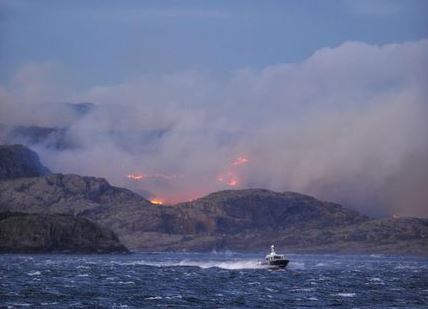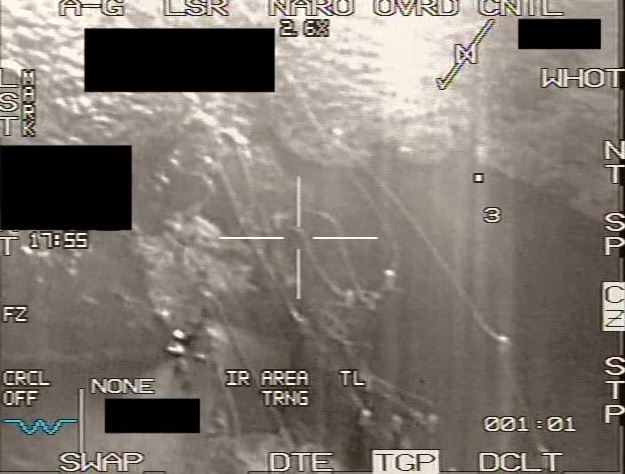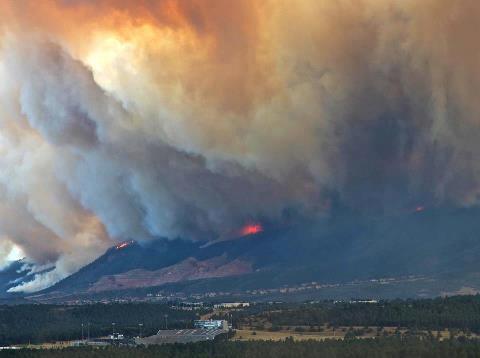A group of people who care about firefighters have been looking at the safety and fatality record of wildland firefighters over the last 20 years. They are convinced that more effective steps can be taken to slow down the accident and fatality rates and will be establishing a forum in which firefighters and others can contribute toward that goal. In the coming months they will be organizing a more formal means for two-way communication with those involved in this effort, but until then, we have been asked to provide this introductory information that they submitted:
****
“Introducing: Safety Matters: A Wildland Firefighter Forum for Change
We are a diverse group of individuals who are passionate advocates for wildland firefighter safety. We seek and encourage participation in this dialog with relevant comments and suggestions from a wide audience including but not limited to:
- wildland firefighters
- fire managers and policy makers
- families and friends who have lost a loved one
- homeowners in the wildland urban interface
The purpose of this paper and forum is to call attention to deficiencies in wildand firefighter safety presented by current wildland fire management systems. We encourage firefighters, the public, and their representatives to support and demand changes in policy and practices so that wildland firefighter and public safety is truly the first priority in all fire management actions.
In the coming weeks, following our introductory paper, we will post several specific safety topics for review and discussion. Please direct your interest to our email address below (preferred), or you may leave a reply at the end of this article.
Safety Matters: A Wildland Firefighter Forum for Change
Dan O’Brien: Career Wildland Firefighter: National Park Service: Retired
Elizabeth Anderson: Fire Ecologist:National Park Service & U.S. Forest Service: Retired
Barry Hicks: U.S. Forest Service: Retired
Judy Edwards: Ruby River Consulting
Holly Neill: Wildland Firefighter: National Park Service & U.S. Forest Service: Retired
EMAIL: SafetyMatters a t aol . com
correction EMAIL: Safety.Matters a t aol . com
Thank you to Bill Gabbert for hosting this Forum!
————————————————-
Safety Matters: A Wildland Firefighter Forum for Change
A. Overview: The primary aim of wildland fire suppression is to safely suppress wildland fires and protect values at risk. While this objective has remained the same across a century of fire suppression, the wildland fire environment has changed dramatically over the last 30 years. Decades of effective wildland fire suppression has led to a heavy loading of burnable fuels in wildland areas. Shifts in global weather patterns have produced consistently longer and more severe fire seasons. Together, these changes have resulted in historically unique conditions in which high fire frequency, rapid fire growth and extreme fire behavior have become the new norm.
Additionally, values at risk to wildland fire have exponentially increased in number and complexity. Public and political demand for firefighters to effectively protect resources located in the wildland-urban interface- particularly homes- has made structure protection a permanent aspect of wildland fire suppression.
It has been twenty years since fourteen firefighters died on the South Canyon Fire in Colorado. Subsequent to those fatalities, there have been positive changes made to improve firefighter safety. In spite of those developments, the total number of firefighter fatalities has steadily increased. In 2013, 34 wildland firefighters perished, 19 of which were members of the Granite Mountain Hotshot Crew on the Yarnell Hill Fire. In spite of these tremendous losses, to our knowledge, no action toward the improvement of firefighter safety has been initiated or scheduled by any governing wildland fire management agency.
The continued annual occurrence of firefighter fatalities suggests that existing fire suppression practices routinely fail to adequately prioritize firefighter safety over the protection of values at risk.
Improvements to firefighter safety should come from field experience, review of existing data, and research. The fire organization has never developed a comprehensive plan or process for determining trends, needs, strengths or deficiencies concerning firefighter safety. This need is partially being filled by independent parties and individuals.
B. National Wildland Firefighter Policy and Guidance: Policy regarding the prioritization of firefighter safety is established by the Department of Agriculture, Department of Interior and the National Association of State Foresters. This policy was adopted in 1995 and, while later modified, still reads:
“Firefighter and public safety is the first priority in every fire management activity.”
The National Wildfire Coordination Group chartered the Federal Fire and Aviation Safety Team (FFAST) to help coordinate firefighter safety issues. This team states:
“The goal of the fire safety program is to provide direction and guidance for safe and effective management in all activities. Safety is the responsibility of everyone assigned to wildland fire, and must be practiced at all operational levels from the national fire director, state/regional director, and unit manger, to employees in the field. Firefighter and public safety always takes precedence over property and resource loss.”
C. Current Wildland Fire Situation: Vegetation and weather conditions have significantly changed over the last three decades to produce historically extreme fire behavior, growth potential and fire frequency. The current wildland fire situation can be attributed to significant changes in three variables:
1. Following a century of aggressive fire suppression, the amount of burnable vegetation has dramatically increased in wildland areas.
2. The wildland-urban interface has become increasingly populated by private residences and other values at risk. The increase in residential homes in these areas is accompanied by increasing public and political demand that firefighters protect these structures from wildfire. Efforts to defend homes and communities through hazard fuel reduction programs have not kept pace with the increasing threat. Funding cuts for hazard fuels reduction projects have compounded this trend.
3. There has been a continued and significant change in weather patterns across the US that is characterized by record high average temperatures, low average humidities, droughts, and longer fire seasons.
These three factors have synergistically combined to produce fire behavior and rates of spread that many veteran firefighters have never before experienced. Firefighters operating under rapidly deteriorating conditions have found they can quickly become at higher risk than the structures they are attempting to protect. The expectation and pressure to succeed imposed by firefighters themselves, their supervisors, the fire organization, and the public, further clouds this issue of firefighter safety being the first priority. These situations have repeatedly occurred over the last 20 years and on multiple occasions have resulted in firefighter fatalities.
D. Common Factors in Wildland Fire Burnover and Entrapment Fatalities: A recent independent study showed that four critical factors can jeopardize firefighter safety. As these independent factors intersect, firefighter safety is increasingly compromised.
1. A recent independent study showed that entrapment fatalities almost entirely occurred on low management complexity fires that escaped initial attack and were rapidly expanding in size and complexity.
2. Rapid and unforeseen changes of weather variables (particularly changes in wind direction and speed) under conditions of extreme fire danger resulted in unanticipated, explosive fire growth. Accelerated fire expansion and extreme fire behavior quickly rendered existing strategies and tactics to be ineffective and/or unsafe. As time frames for evaluation and decision-making became compressed, key incident personnel found themselves functioning at an incident complexity level that exceeded their abilities and qualifications.
3. Land managers with jurisdictional responsibility often failed to provide timely and clear management direction and priorities to fireline personnel. This was especially true during times when conditions and situations were rapidly worsening.
4. Structures threatened by wildfire may often require the presence of firefighters. Firefighters can be subject to intense external and internal expectations pressures concerning structure protection. These factors alone can make it extremely difficult to objectively prioritize firefighter safety. Recent independent studies strongly suggest that decisions made under these circumstances have been a major factor in incidents that resulted in firefighter fatalities.
E. Conclusion: For 20 years federal policy has identified firefighter and public safety as the first priority of all wildland fire management actions. Despite this policy and efforts made to implement it, records for the same period demonstrate that fatality rates for burnovers and entrapments have remained relatively constant. During this same time period, the fire organization has not identified all of the critical factors that contribute to firefighter fatalities. Without this understanding, it is improbable that needed changes will be made. In order to effectively reduce future wildland firefighter fatalities, a comprehensive and impartial review of all current wildland fire management procedures and practices must be completed.”











